 Have you ever seen how the flax is grown and processed until it becomes linen fabric? It’s a fascinating process, by the way. People used to make so much effort in making the fabric for their clothes. We’re lucky to have the textile industry. Though, our common clothing is less natural; some people even consider it soulless. If you like eco-friendly clothes, it might be interesting for you to try and grow your own linen.
Have you ever seen how the flax is grown and processed until it becomes linen fabric? It’s a fascinating process, by the way. People used to make so much effort in making the fabric for their clothes. We’re lucky to have the textile industry. Though, our common clothing is less natural; some people even consider it soulless. If you like eco-friendly clothes, it might be interesting for you to try and grow your own linen.
Hello, my name is Colm Clarke, and I've lived in the Carrigans area of County Donegal (Ireland) for most of my life. I've worked in the flax and linen industry up until 1955. Last year, here at the Monreagh Heritage Centre in County Donegal, we decided to film the process of producing linen.
There are six steps in the process:
Step 1: we sow the flax seed in April.
Step 2: the flax plant grows to full height after three months.
Step 3: we pull it and put it in a dam to soak for 2 weeks.
Step 4: Spread it and dry it on a grass field. It takes about ten days.
Step 5: Plant is lifted and bundled together into “stooks” for five days.
Step 6: The sixth step of the process is by hand, ready for the mill to produce linen.
Growing and pulling flex
Early April. Now we're ready to sow the flax.
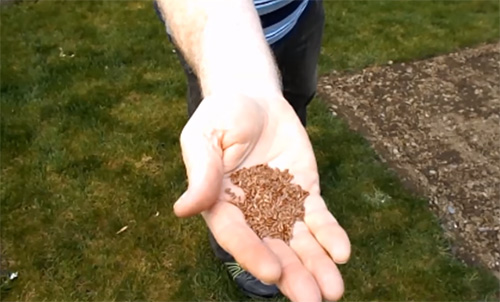

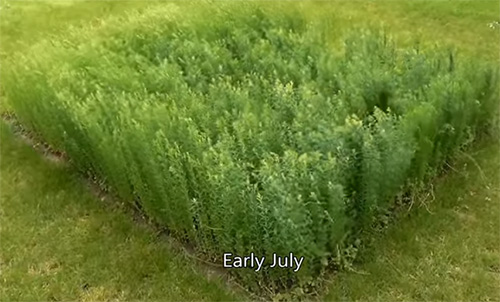
August. It’s time to pull the flax.
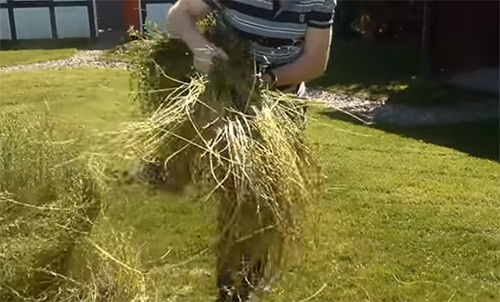
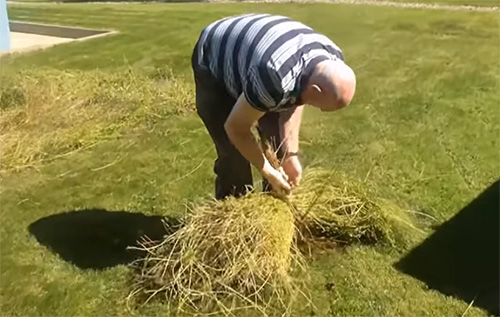
Soaking flax (rhetting)
This is the flax we pulled the last day. We're going to take it and soak it now. You can soak it the Ulster Scots way or the English way. We can soak it or “steep” it. The English word is “rhett”. We'll put it in now and “rhett” it.
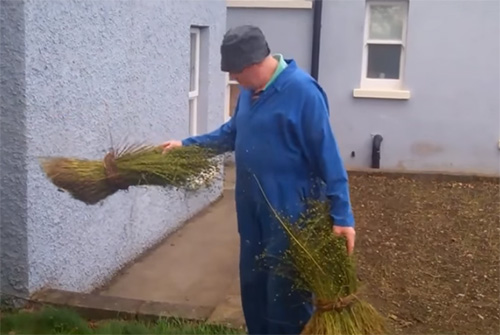
You can put the stones on top to keep it down. We keep it in here for 7 to 11 days.
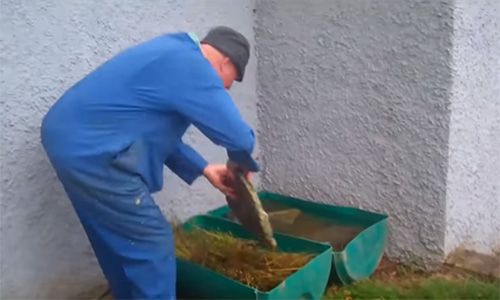
You then take it out and break it. And if it breaks “clean” (the outer skin comes off), it is ready for taking out and spreading.
Spreading and drying
Early September. We spread flax stems on the grass and dry it.
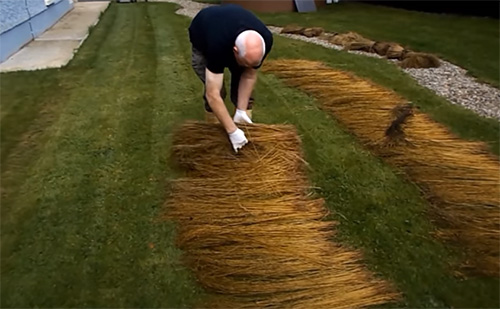
This is a band made of rushes.
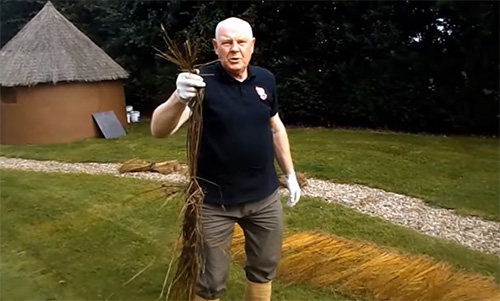
Gathering and stooking
Mid-September. We gather the dried flax and tie it in sheaves. The sheaves are left standing until the next step to prevent moisturizing and rotting.
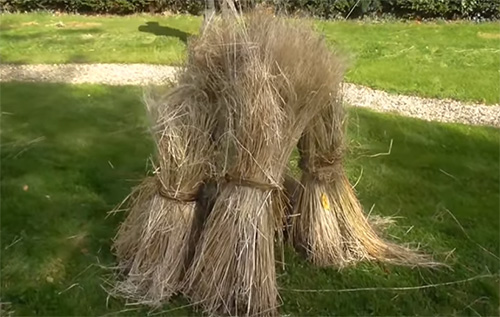
Breaking down the fibre
The process we will do now is known as “stutching”. It would have been done like this up until the 1930s. We just keep beating the stems. This process that I have done is breaking the inside fibers of the plant. It's the inside fibers that give us pure linen.
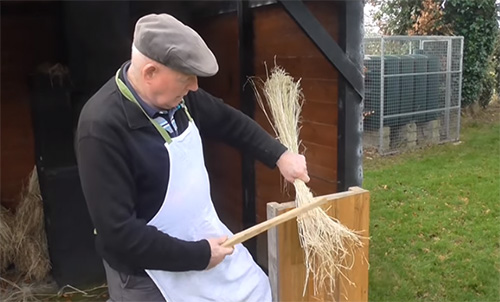
Crimping
This process is known as “crimping”. This breaks the fibers further down so that we can take it to the next process.
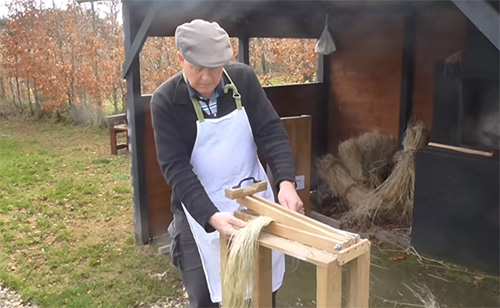
Brushing
This is the “brushing” part that takes off the coarser part of the plant.
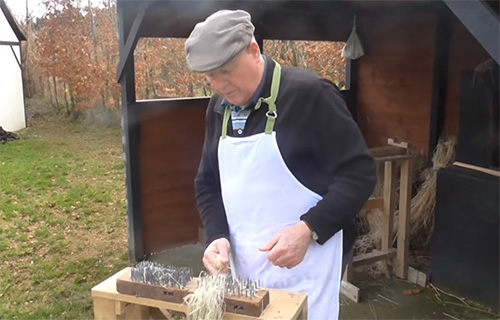
That's the finished product. That is pure linen. In the modern mill, this process was done with machinery. But I’ve done it by hand.
Making linen threads and fabric
This product would now be sent to the linen mill to be turned into thread. At first, people were hand spinning the fibers into threads. Later, the spinning wheel was invented and used.
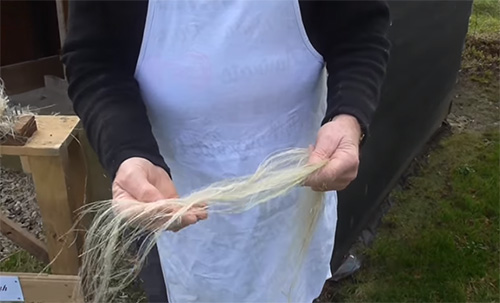
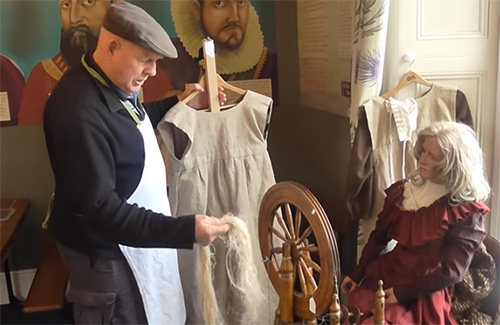
The spinning wheel was used in the 18th and 19th century to produce thread. This process was used before the big mills. Also, on the photo, you can see an example of what was made in the 19th century.
(c)


